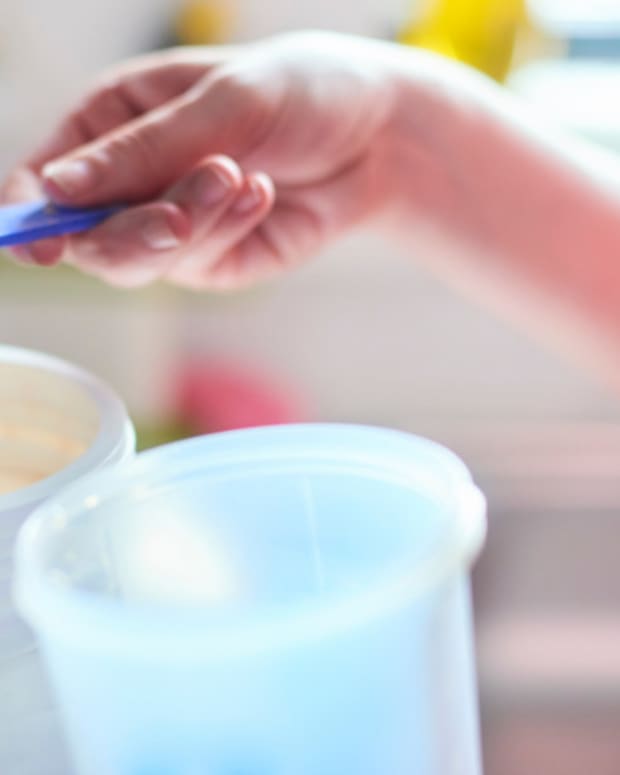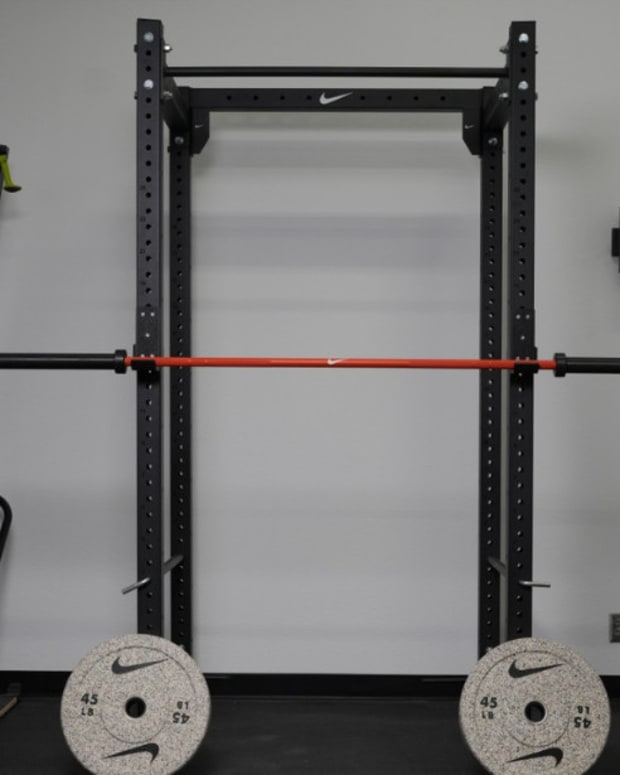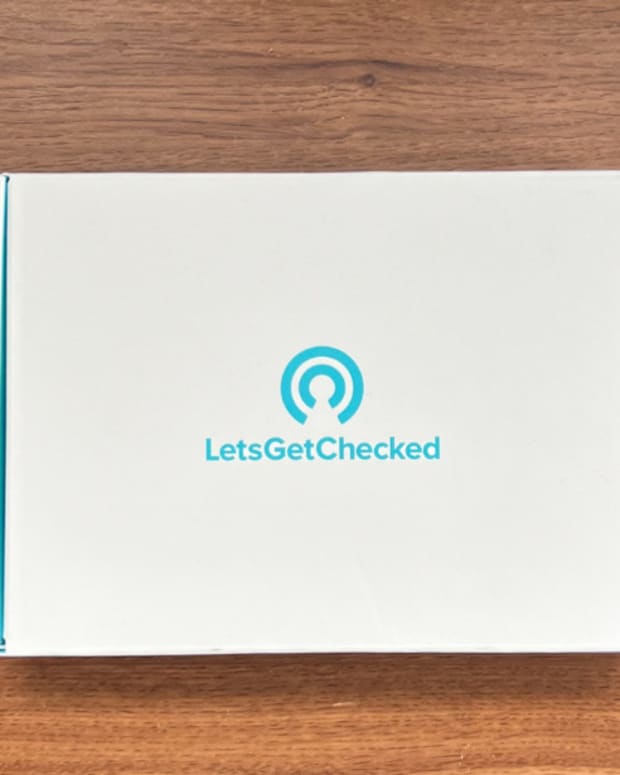The products featured in this article have been independently reviewed. When you buy something through the retail links on this page, we may earn commission at no cost to you, the reader. Sports Illustrated editorial staff are not involved in the creation of this content. Learn more here.
LetsGetChecked is a healthcare solutions company that offers self-administered, at-home tests for a variety of wellness biomarkers. The high-sensitivity CRP test, also known as the heart health test, involves taking a blood sample to measure your c-reactive protein (CRP) levels. CRP is an inflammatory marker that can be used to assess your risk of cardiovascular disease (1).
Your CRP levels can be elevated for a number of reasons, including chronic inflammatory conditions like Crohn’s Disease, Ulcerative Colitis, arthritis or other autoimmune diseases. However, the high-sensitivity CRP test is designed specifically to measure lower levels of inflammation that are better indicators of heart health (2). This test requires you to prick your finger and submit a blood sample in a test tube provided with your testing kit.
For this review, I tried the high-sensitivity CRP test myself. Below you’ll find my experience with LetsGetChecked as a company, my experience actually using the test and what your results may indicate about your health.
This test is not a substitute for professional medical advice. These tests are not meant to diagnose any conditions. Discuss any test results with your healthcare provider. If you are experiencing negative physical symptoms, see a doctor as soon as possible.
High-Sensitivity CRP Test At A Glance
- Price: $89
- Time from sample received to results: 2–5 days
- Covered by insurance: No
- Tests for: C-reactive proteins (CRP)
- Sample type: Finger prick
- Follow-up care: LetsGetChecked may call with your results if they are abnormal; otherwise, you are advised to follow up with your primary care provider or schedule a telehealth visit with a LetsGetChecked provider (additional charge).
How the Heart Health Test Works
The LetsGetChecked heart health test process is fairly simple:
- Order your kit online
- Receive and activate your kit
- Take inventory of your supplies (there is a list in the box)
- Activate the kit through the QR code
- Take a blood sample (written and video instructions available)
- Ship the kit back to LetsGetChecked
- Receive your results
My kit arrived at my address one week after I placed the original order. Everything you need for the heart health test is included in the kit, and there are multiple different resources with directions to help you collect your sample.
What It Tests For
The proper name for the LetsGetChecked Heart Health test is the high-sensitivity CRP test. A CRP test is a way for healthcare providers to assess your risk for cardiovascular disease by looking at the inflammatory marker c-reactive protein (CRP) (1).
High-sensitivity CRP tests are slightly different from standard CRP tests in that they require a smaller sample and can detect lower levels of CRP elevation than standard tests (2).
Interpreting Your Heart Health Test Results
A high-sensitivity CRP test only measures whether there is inflammation in your body, but it can’t tell you where that inflammation is located (3). CRP is measured in milligrams per deciliter (mg/dL) of blood (4). How you should interpret your CRP test results depends on a number of individual factors, but according to the National Institute of Health (NIH), general guidelines for CRP levels are:
- Normal: less than 0.3 milligrams per deciliter
- Slightly elevated: between 0.3 milligrams per deciliter and one milligram per deciliter
- Moderate elevation: between one and 10 milligrams per deciliter
- Marked elevation: more than 10 milligrams per deciliter
- Severe elevation: more than 50 milligrams per deciliter (4)
My Experience With the LetsGetChecked Heart Health Test
Ordering, shipping and delivery
As I said before, I received my test kit one week after my original order. I had no problems with shipping, delivery or activating my kit.
Activating your kit is a very important step before you try to collect your sample. This will register your kit’s unique number so your sample is tied to your information. Inside the kit box is a card with a QR code you can scan with your smartphone and instructions to manually register your kit on the LetsGetChecked website.
Collecting the sample
I highly recommend you read the instructions before collecting your blood sample. Reading the instructions ahead of time will help you avoid some of the problems I encountered. Inside the instruction booklet is also an inventory of the medical supplies you need to collect your sample. Make sure you have all of the supplies laid out and ready before trying to collect your sample.
Collecting the blood sample is the part where the “at-home” process broke down for me. My kit included four lancets, and that was fortunate because I wound up having to use them all to get enough blood to fill up the test tube.
I had a really difficult time collecting my sample. I think part of the problem was that I did not read the directions all the way through, so I didn’t run my hands under warm water or do anything else to stimulate the blood flow. However, getting the sample into the vial was also difficult. I followed all of the directions in both the video and the booklet, but more blood wound up in the sink than in the vial. As I said, I had to use all four lancets on four different fingers before I got enough of my sample into the vial to cross the fill line.
To me, there has to be a better way for people to collect the sample at home. I’m unsure whether a small funnel or another helpful tool could make getting the sample in the vial easier, but I imagine collecting the sample is the biggest pain point for users.
Customer service
I had only one interaction with customer service at LetsGetChecked, and it was through the messaging feature in the app. Nurse Kim quickly responded to my follow-up question about the ruined sample, and the answer was clear, direct and polite. I received a free replacement kit after about four days.
Interpreting my results
After I shipped my sample, I received a message from the team at LetsGetChecked through the app in about 30 hours. This was faster than I expected, but when I opened the message, I read that my sample could not be analyzed.
According to the representative, my sample was hemolyzed, which basically means the red blood cells burst in the sample and could not be analyzed accurately. LetsGetChecked offered to send me a replacement kit to try again, and as of writing, I haven’t received the results yet.
According to the help article I received from the LetsGetChecked representative, a sample can be hemolyzed if the collection was difficult, if the vial was shaken vigorously, or if there was a long delay between collection and analysis. Some of these issues are beyond the user's control, but others can be avoided with careful review of the instructions.
Related Post: LetsGetChecked Thyroid Test Review
What We Like About the LetsGetChecked Heart Health Test
- Results are available within two to five days of collecting the sample
- Convenient, clear directions for every step of the testing process
- Quick response from the customer service team
- HSA or FSA eligible
What to Consider
- There is a lot of room for human error (especially in the sample collection)
- If your sample is ruined in transit, LetsGetChecked will only replace the kit once
Who Should Consider a High-Sensitivity CRP Test
A CRP test can only tell you whether your body has elevated inflammatory markers, but it can’t tell where that inflammation comes from. In that sense, the test offers limited information when you use it by itself. Therefore, a high-sensitivity CRP test may be best used in conjunction with other tests to give you a fuller picture of your risk for cardiovascular disease (5). LetsGetChecked also offers a cholesterol test and a diabetes test that you can use with the high-sensitivity CRP test if you are curious about your heart health.
However, if you have any of the following conditions, LetsGetChecked says that your results will be skewed:
- You have a chronic inflammatory condition that you want to monitor, such as inflammatory bowel disease (Crohn’s and Ulcerative Colitis), rheumatoid arthritis or autoimmune diseases like lupus (3).
- You have symptoms of a bacterial infection like fever, chills, rapid heart rate, rapid breathing or nausea/vomiting (3).
- You use hormone replacement therapy.
- You have recently suffered an acute injury like a broken bone, sprained ankle or other injuries.
All of the above may elevate your levels of CRP independent of your heart health, so the test will not give an accurate picture of your risk for cardiovascular disease.
Related Post: The Best Heart Rate Monitors for Cycling, Running and More
Symptoms of Irregular CRP Levels
There are no specific symptoms of elevated CRP levels because it typically depends on the cause of the inflammation. For example, a bacterial infection can elevate your CRP levels with symptoms like fever, chills, elevated heart rate, nausea and vomiting (7). An acute injury can elevate your CRP levels, and the symptoms may be pain, scarring or other related responses to the injury (8).
When to See a Doctor
You should immediately contact your doctor if you receive elevated results on your at-home high-sensitivity CRP test. You should also consult your doctor immediately if you have any unexplained chest pain, shortness of breath, dizziness or other symptoms that could indicate cardiovascular disease.
Related Post: The Best Diets for Heart Health
LetsGetChecked Heart Health Test FAQs
What does the LetsGetChecked heart health test test for?
The LetsGetChecked Heart Health test is technically called the high-sensitivity CRP test, which tests for C-reactive protein (CRP) in your blood. CRP is a marker of inflammation, so it can also be used to monitor your inflammation levels if you have a chronic inflammatory condition like IBD, arthritis or other autoimmune diseases (3).
When is the best time to take the LetsGetChecked heart health test?
According to LetsGetChecked, the CRP test sample should be collected in the morning (no fasting required) and returned the same day it was collected.
Does LetsGetChecked offer any follow-up care once you take the heart health test?
A LetsGetChecked representative may contact you to discuss your test results, but it is unclear whether there is certain criteria to warrant the phone call. Follow-up care is not included in the cost of the test. Users can schedule a telehealth visit with a LetsGetChecked medical team member or coordinate with their primary care provider.
What samples are required for the LetsGetChecked heart health test?
A high-sensitivity CRP test requires a blood sample. Your LetsGetChecked kit provides all the medical supplies you need to collect the sample. There are four lancets, bandages, alcohol wipes, the sample vial and instructions for properly collecting your sample.
The tube provided by LetsGetChecked has two lines on it. Any sample over the top line or under the bottom line will not be analyzed by the lab. The instruction booklet suggests getting as close to the top line as possible.
Takeaway: Is the LetsGetChecked Heart Health Test Worth It?
The LetsGetChecked high-sensitivity CRP test seems limited as a stand-alone test because it can only tell you whether you have inflammation in your body. LetsGetChecked is very helpful and responsive from a customer service perspective, so if you’re already knowledgeable about your heart health, then the test may be useful. However, if you are just curious about your heart health, it may be best to use the CRP test together with other tests LetsGetChecked offers.
Prices are accurate and items in stock as of publish time.
These statements have not been evaluated by the Food and Drug Administration. These products are not intended to diagnose, treat, cure, or prevent any diseases.
References
- Amezcua-Castillo, Emanuel, et al. “C-Reactive Protein: The Quintessential Marker of Systemic Inflammation in Coronary Artery Disease—Advancing toward Precision Medicine.” Biomedicines, vol. 11, no. 9, 1 Sept. 2023, p. 2444, www.mdpi.com/2227-9059/11/9/2444, https://doi.org/10.3390/biomedicines11092444.
- Banait, Tanvi, et al. “Role of High-Sensitivity C-Reactive Protein (Hs-CRP) in Non-Communicable Diseases: A Review.” Cureus, 12 Oct. 2022, https://doi.org/10.7759/cureus.30225.
- MedlinePlus. “C-Reactive Protein (CRP) Test: MedlinePlus Lab Test Information.” Medlineplus.gov, 2018, medlineplus.gov/lab-tests/c-reactive-protein-crp-test/.
- Nehring, Sara M, and Bhupendra C Patel. “C Reactive Protein (CRP).” National Library of Medicine, StatPearls Publishing, 21 Apr. 2019, www.ncbi.nlm.nih.gov/books/NBK441843/.
- MD, Robert H. Shmerling. “Should You Be Tested for Inflammation?” Harvard Health, 29 Mar. 2022, www.health.harvard.edu/blog/should-you-be-tested-for-inflammation-202203292715.
- “C-Reactive Protein (Blood) - Health Encyclopedia - University of Rochester Medical Center.” www.urmc.rochester.edu, www.urmc.rochester.edu/encyclopedia/content.aspx.
- Holmqvist, M., et al. “Risk of Bacteremia in Patients Presenting with Shaking Chills and Vomiting - a Prospective Cohort Study.” Epidemiology and Infection, vol. 148, 2020, https://doi.org/10.1017/s0950268820000746.
- Gwark, Ji-Yong, and Hyung Bin Park. “Association of High Sensitivity C-Reactive Protein with Tearing of the Long Head of the Biceps Tendon.” BMC Musculoskeletal Disorders, vol. 20, no. 1, 7 Nov. 2019, https://doi.org/10.1186/s12891-019-2908-2.











